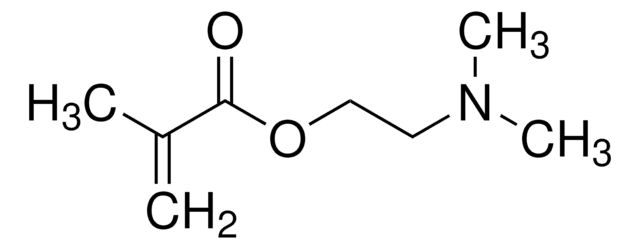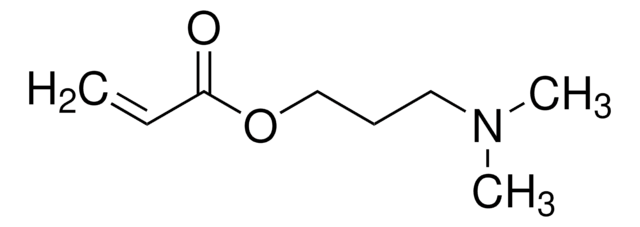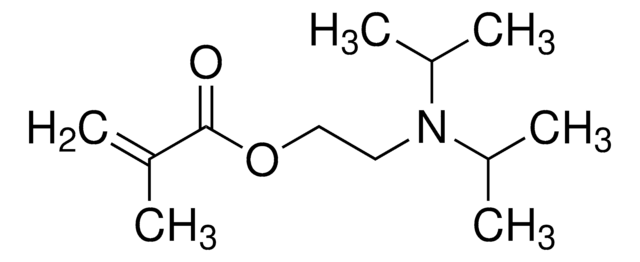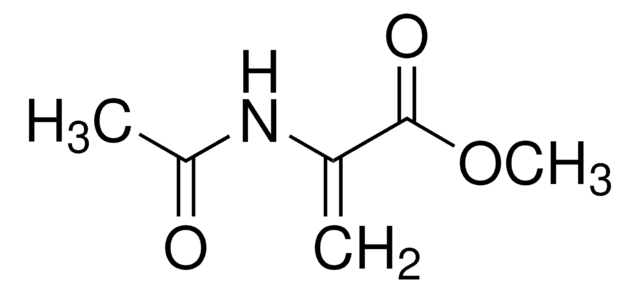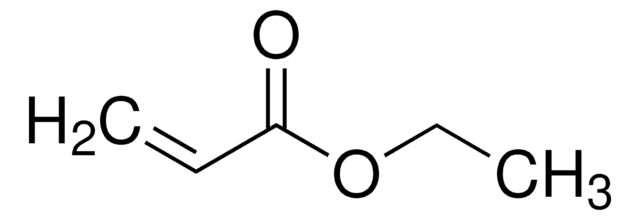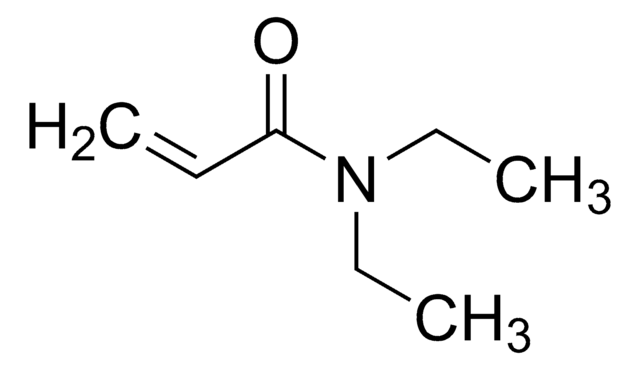408972
2-(Diethylamino)ethyl acrylate
95%, contains 25 ppm monomethyl ether hydroquinone as inhibitor
Synonyme(s) :
(N ,N -Diethylamino)ethyl acrylate, [2-(Acryloyloxy)ethyl]diethylamine
About This Item
Produits recommandés
Pression de vapeur
0.77 psi ( 20 °C)
Niveau de qualité
Pureté
95%
Contient
25 ppm monomethyl ether hydroquinone as inhibitor
Indice de réfraction
n20/D 1.443 (lit.)
Point d'ébullition
199 °C (lit.)
Densité
0.922 g/mL at 25 °C (lit.)
Chaîne SMILES
CCN(CC)CCOC(=O)C=C
InChI
1S/C9H17NO2/c1-4-9(11)12-8-7-10(5-2)6-3/h4H,1,5-8H2,2-3H3
Clé InChI
QHVBLSNVXDSMEB-UHFFFAOYSA-N
Vous recherchez des produits similaires ? Visite Guide de comparaison des produits
Mention d'avertissement
Danger
Mentions de danger
Conseils de prudence
Classification des risques
Acute Tox. 2 Dermal - Acute Tox. 4 Oral - Eye Dam. 1 - Skin Corr. 1B - Skin Sens. 1
Code de la classe de stockage
6.1A - Combustible acute toxic Cat. 1 and 2 / very toxic hazardous materials
Classe de danger pour l'eau (WGK)
WGK 2
Point d'éclair (°F)
165.0 °F - closed cup
Point d'éclair (°C)
73.9 °C - closed cup
Équipement de protection individuelle
Faceshields, Gloves, Goggles, type ABEK (EN14387) respirator filter
Faites votre choix parmi les versions les plus récentes :
Déjà en possession de ce produit ?
Retrouvez la documentation relative aux produits que vous avez récemment achetés dans la Bibliothèque de documents.
Les clients ont également consulté
Notre équipe de scientifiques dispose d'une expérience dans tous les secteurs de la recherche, notamment en sciences de la vie, science des matériaux, synthèse chimique, chromatographie, analyse et dans de nombreux autres domaines..
Contacter notre Service technique
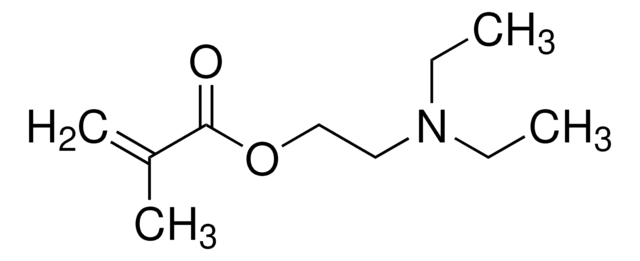
![N-[3-(Dimethylamino)propyl]methacrylamide 99%, contains MEHQ as inhibitor](/deepweb/assets/sigmaaldrich/product/structures/295/145/6b4aae15-7cb5-4b7b-9c06-8e6d24e50951/640/6b4aae15-7cb5-4b7b-9c06-8e6d24e50951.png)
